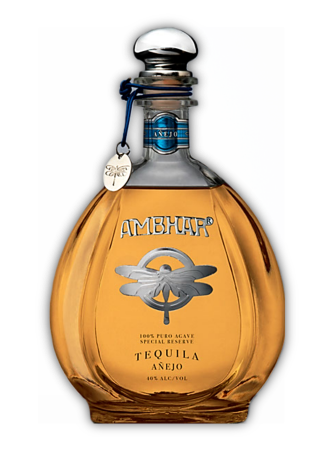Tequila is only possible because of the blue agave plant.
Mar 23, 2023
Take a trip through time that focuses on blue agave and the development of the tequila distillation process.
Tequila, the most famous spirit to come out of Mexico, has been enticing the palates of people from all over the globe for centuries. The blue agave plant is the primary component that contributes to tequila's one-of-a-kind flavor character. This delicious beverage gets its name from the agave plant, which is also the main ingredient.
Join Ambhar Tequila as we investigate the significant part that the blue agave plant plays in the manufacturing of tequila, as well as take an enlightening look at the interesting development of the distillation process over the course of history.
Tequila is only possible because of the blue agave plant.
The blue agave is a succulent plant that is indigenous to the barren regions of Mexico. This plant flourishes in the volcanic soil of Jalisco. The blue agave has a maturation period of about 8 to 12 years, and its cultivation calls for a great deal of attention to detail and persistence. When an agave plant has reached maturity, the piña, also known as the heart of the plant, is harvested and used in the manufacturing of tequila.
In order to harvest the piña, experienced farmers known as Jimadores are tasked with the laborious mission of cutting away the pointed leaves one by one. This time-consuming procedure is essential for ensuring the quality of the piñas and the amount of sugar they contain, both of which have a direct impact on the flavor and quality of the tequila.
Early Distillation Methods, Charting the Path from Piña to Tequila.
Since the Spanish brought distillation techniques to Mexico in the 16th century, the process of transforming the piña from the blue agave plant into tequila has been around since that time. At first, the harvested piñas were roasted in giant pits lined with stones in order to transform the complex carbohydrates in the piñas into sugars that could be fermented. In order to extract the juice from the roasted agave, it was first crushed with a tahona, which is a large stone wheel.
The fermentation process was carried out in open-air wooden vats, which allowed wild yeasts carried through the air to transform the sugars into alcohol. The resulting liquid, which came to be known as "mosto," was then put through the process of distillation in copper pot stills, which were heated over flames composed of wood or charcoal. In the first distillation, a low-proof spirit known as "ordinario" was generated. This spirit had to be redistilled in order to produce the final product, which was tequila.
The Method Used in Today's Distillation of Tequila.
The production of tequila has become more sophisticated as a result of technological developments made over the years. These days, most distilleries cook the agave in steam cookers or autoclaves because these devices allow for more precise temperature control and greater operational efficacy. In order to more efficiently separate the juice from the agave plant, mechanical shredders or mills have been substituted for the traditional tahona.
Most contemporary distilleries make use of fermentation containers made of stainless steel because these tanks provide a more controlled environment for the fermentation process. These containers can be sealed, which ensures that the same yeast strain is used throughout the process to achieve the best possible flavor profile. In addition, some manufacturers have switched to column distillation, which enables them to have a higher level of precision and control over the flavor and alcohol content of the finished product.
Despite the advances in technology, many tequila manufacturers are still dedicated to maintaining their production processes in the conventional manner. Artisanal distilleries continue to use the tahona and copper pot stills because they are under the impression that these processes produce a tequila that is richer in flavor and more authentic.
Tequila's rich history is supported by the blue agave plant, which serves as the spirit's primary raw material. The distinctive flavor of the spirit is attributable, in part, to its singular characteristics as well as the meticulous cultivation process. Tequila has been able to preserve its traditional flavor while simultaneously catering to the preferences of consumers all over the world as a result of the gradual but steady development of the distillation process over the course of many years. This sensitive balance between innovation and tradition is what makes it possible. Understanding the fascinating journey of the blue agave and the development of tequila distillation only serves to enhance one's appreciation of the spirit, regardless of whether one is a tequila connoisseur or merely an enthusiastic consumer.





